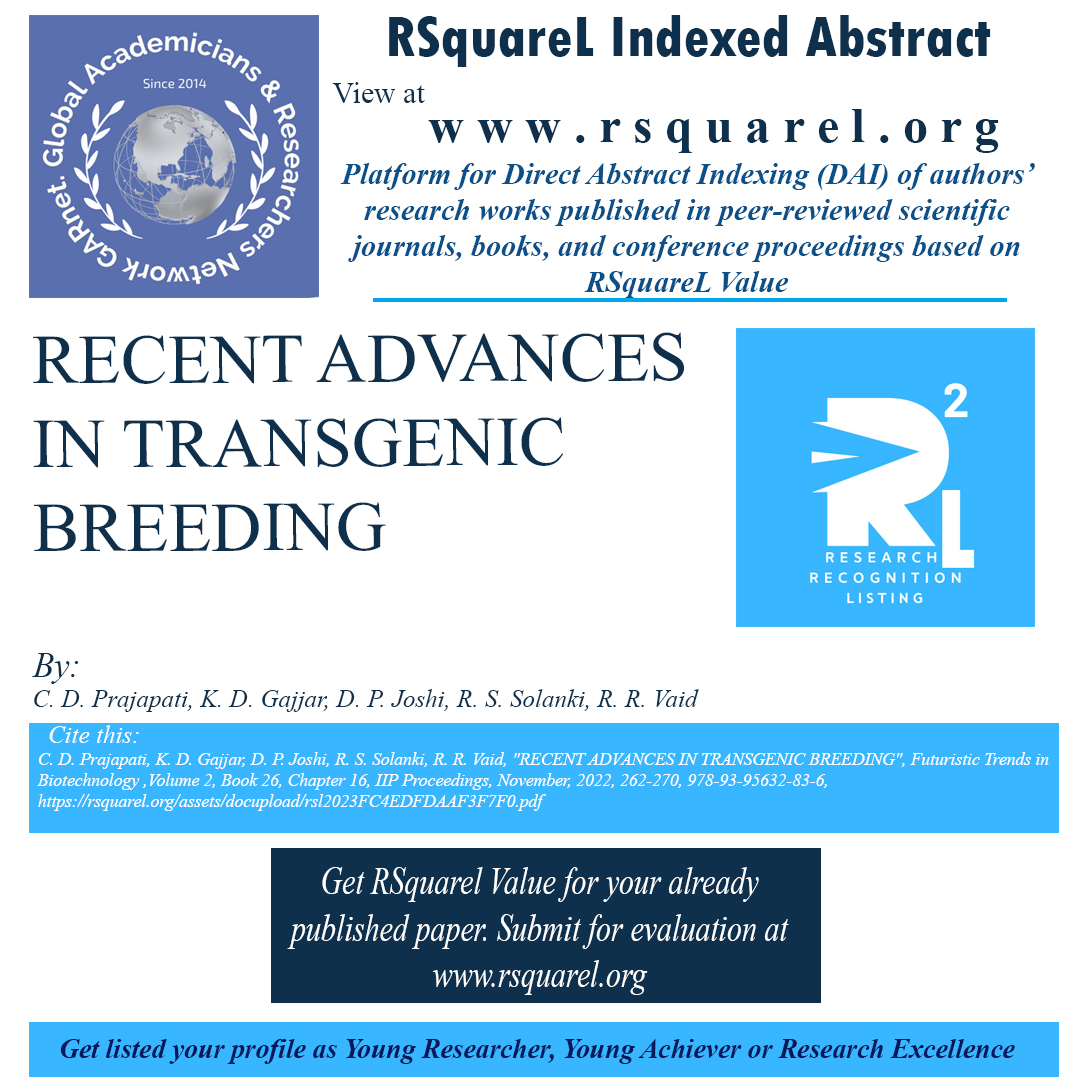editedbook
Publication: IIP Proceedings Year: 2022, Month: November Page No: 262-270, ISSN/ISBN: 978-93-95632-83-6, DOI/Link: https://rsquarel.org/assets/docupload/rsl2023FC4EDFDAAF3F7F0.pdf
RECENT ADVANCES IN TRANSGENIC BREEDING
Area/Stream: Biotechnology, Authors: C. D. Prajapati, K. D. Gajjar, D. P. Joshi, R. S. Solanki, R. R. Vaid Keywords: candidate genes, miRNAs, Transcription factors Book Name /series: Futuristic Trends in Biotechnology ,Volume 2, Book 26, Chapter 16Publication: IIP Proceedings Year: 2022, Month: November Page No: 262-270, ISSN/ISBN: 978-93-95632-83-6, DOI/Link: https://rsquarel.org/assets/docupload/rsl2023FC4EDFDAAF3F7F0.pdf
Abstract:
Abiotic stress is occurring more frequently and has reduced crop productivity as a result of the recent rapid climate change and rising world population. To improve plant genetics, transgenic breeding presents a viable alternative to traditional breeding. Transgenic breeding approaches allow us with access to identify the, miRNAs, candidate genes and transcription factors (TFs) that are involved in specific plant processes. Production of transgenic plants is reported in many crops but commercialization is limited to few selected crops, such as cotton (Gossipium hirsutum L.), corn (Zea mays L.), soybean (Glycine max L.) and canola (Brassica napus L.). Some of the recent advances in transgenic breeding gives opportunity to create better transgenes with precise gene insertion and specific character expression. One such development is clean gene/markerfree technology, which changes plants using two different vectors, one containing a transgene and the other a selectable marker gene. CRISPR-Cas-9 based base editing also offers the introduction of point mutation without generating double stranded brakes. Evolution in grafting process by placing non genetic engineered part on genetic engineered root stock is also modern approach in this field.
Cite this: C. D. Prajapati, K. D. Gajjar, D. P. Joshi, R. S. Solanki, R. R. Vaid,"RECENT ADVANCES IN TRANSGENIC BREEDING", Futuristic Trends in Biotechnology ,Volume 2, Book 26, Chapter 16, November, 2022, 262-270, 978-93-95632-83-6, https://rsquarel.org/assets/docupload/rsl2023FC4EDFDAAF3F7F0.pdf
Views: 4184
Download File
News
